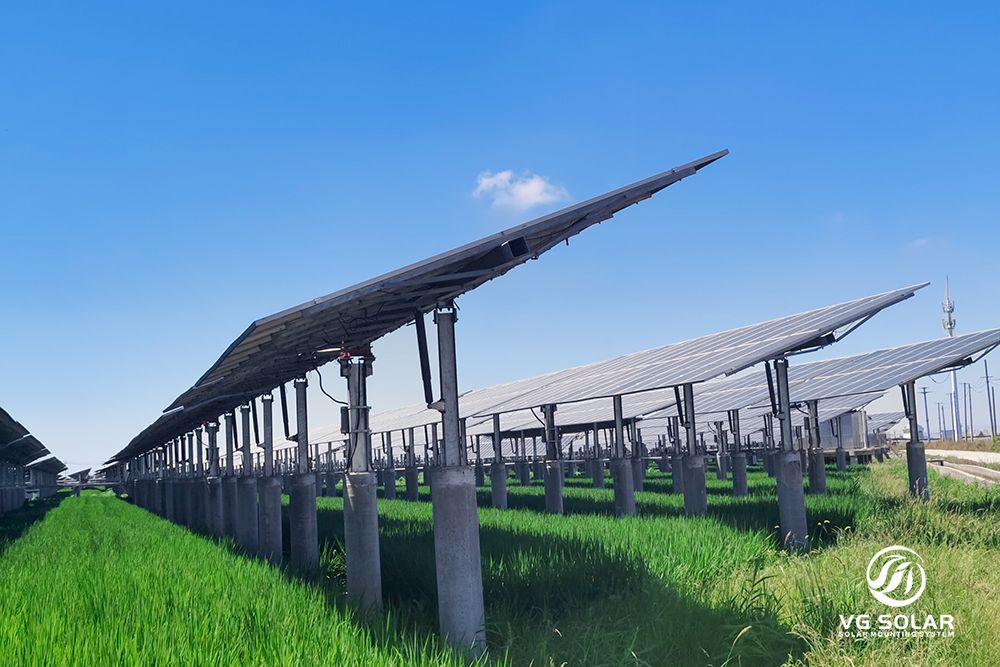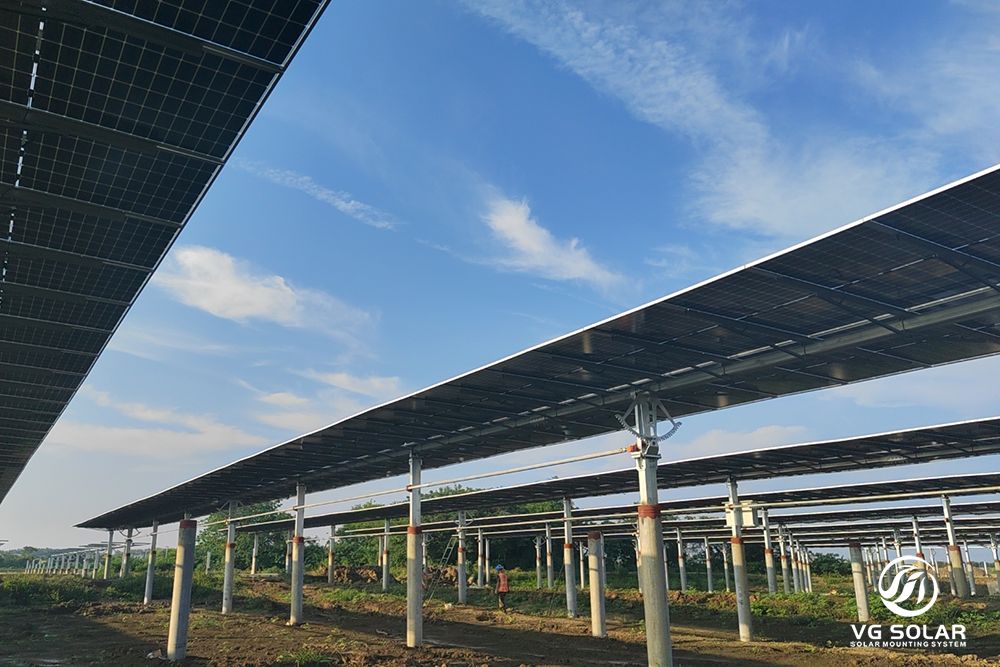Solar energy is a rapidly growing renewable energy source that is gaining popularity as an environmentally friendly alternative to traditional fossil fuels. As the demand for solar energy continues to grow, so does the need for innovative technologies and tracking systems to harness it efficiently. In this article, we’ll explore the differences between single-axis and dual-axis tracking systems, highlighting their features and benefits.
Single-axis tracking systems are designed to track the sun’s movement along a single axis, usually east to west. The system typically tilts the solar panels in one direction to maximise exposure to sunlight throughout the day. This is a simple and cost-effective solution to significantly increase the output of solar panels compared to fixed tilt systems. The tilt angle is adjusted according to the time of day and season to ensure that the panels are always perpendicular to the direction of the sun, maximising the amount of radiation received.
Dual-axis tracking systems, on the other hand, take sun tracking to a new level by incorporating a second axis of motion. The system not only tracks the sun from east to west, but also its vertical movement, which varies throughout the day. By constantly readjusting the tilt angle, the solar panels are able to maintain their optimal position relative to the sun at all times. This maximises exposure to sunlight and increases energy production. Dual-axis tracking systems are more advanced than single-axis systems and offer greater radiation capture.
While both tracking systems offer improved power generation over fixed-tilt systems, there are significant differences between them. One key difference is their complexity. Single-axis tracking systems are relatively simple and have fewer moving parts, making them easier to install and maintain. They also tend to be more cost-effective, making them an attractive option for small solar projects or locations with moderate solar radiation.
On the other hand, dual-axis tracking systems are more complex and have an additional axis of motion that requires more complex motors and control systems. This increased complexity makes dual-axis systems more expensive to install and maintain. However, the increased energy yield they provide often justifies the additional cost, especially in areas of high solar irradiation or where there are large solar installations.
Another aspect to consider is the geographical location and the amount of solar radiation. In regions where the direction of the sun varies significantly throughout the year, the ability of a dual-axis tracking system to follow the east-west movement of the sun and its vertical arc becomes very advantageous. It ensures that the solar panels are always perpendicular to the sun’s rays, regardless of the season. However, in regions where the sun’s path is relatively constant, a single-axis tracking system is usually sufficient to maximise energy production.
In summary, the choice between a single-axis tracking system and a dual-axis tracking system depends on several factors, including cost, complexity, geographical location and solar radiation levels. While both systems improve solar power generation compared to fixed-tilt systems, dual-axis tracking systems offer higher radiation capture due to their ability to track the sun’s movement along two axes. Ultimately, decisions should be based on a thorough assessment of the specific requirements and conditions of each solar project.
Post time: Aug-31-2023


